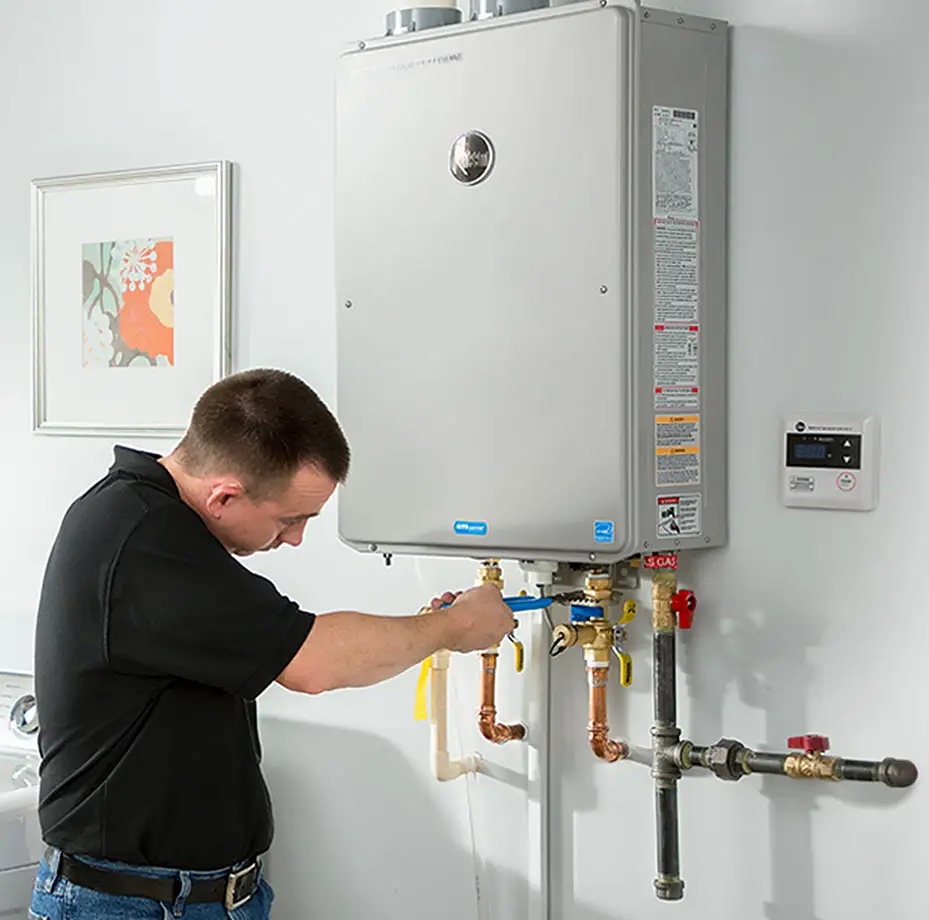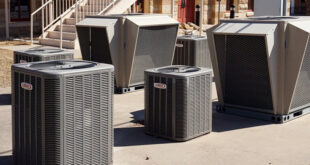
A water heater is a very simple device especially when it’s an electric model. Water enters from the one side of the tank and it leaves the other side after being warmed. There are electric resistance elements that are present inside due to which the water is easily heated. This whole process is an easy one but unfortunately, it is not so easy to install. It takes a lot of factors such as electrical work as well as plumbing to install the water heater. I’d you were surfing the internet for this reason then luckily you have landed on the right page. This article will guide you through 5 effective ways for water heater installation.
Page Contents
- FAQs on Installing a Water Heater
- Q: What’s the briefest description of a water heater?
- Q: Is it complicated to install a water heater?
- Q: Should you plan it?
- Q: What’s the first thing to do?
- Q: Did you get the right model?
- Q: Is water pressure necessary for the installation?
- Q: Is electrical and plumbing work required?
- Q: Do you know what type of expansion tank do you need?
- Q: Will you have to solder pipes with water heaters?
- Q: How to solder pipes?
- Q: Have you checked the metal connections? Are they compatible?
- Q: Is it dangerous to install a water heater?
- Q: Should you secure the water heater after installing it?
- Q: Why reduce the risk of scalding after installation?
Steps for water heater installation
Building a Platform for Water heater installation
Selecting a spot that would be convenient for the tank is one of the most important ways for the installation of a water heater. It is recommended that one should place two or three concrete blocks on the floor so that it may have a decent height. It also helps the draining system as it fastens the whole process. Moreover, it also prevents the damage caused by minor floods.
Center the tank properly
After building a platform, one should make sure that the tank is right on the top of the blocks. One should also make sure that the tap is faced to the front side. One should also make sure that the tank is not loose and one can confirm it by moving it twice to make sure it doesn’t move. Even if the tank moves, repositioning the block would make it stable.
Knowing the basics of soldering
One of the easiest building skills to acquire is to solder the copper tubing and fit it along. All one needs is propane along with tubing cutter, some paste flux, and pads of steel wool. One can easily solder it with the use of this equipment which helps in the installation of the water heater. Many people don’t solder it with care which results in their hand getting a little bit of burning.
Temperature and pressure relief valve
The temperature and pressure relief valve which is also known as the T&P valve is basically. A safety device that creates a pathway for the water to escape if things go unplanned. This happens when the pressure inside the tank rises to a dangerous level for any reason. It is recommended and important that the valve you purchase is the same as your water heater.
Electrical Power
When water heater installation is considered, one should be vigilant about electrical power consumption. A water heater requires a 220-volt circuit which also means a 30 amp circuit breaker along with 10/2 circuit cable. One should also note down the distance from the water heater to the socket. Many times the wire is quite shorter than the required which results in adding another joint in between. This may weaken the connection and is not recommended at all. While arranging the cable, one should always staple the cables after small distances such as every 2ft.
Videos
Here’s how to install an electric water heater:
And here’s how to install a tankless water heater:
FAQs on Installing a Water Heater
Q: What’s the briefest description of a water heater?
A: Water heaters, electrical models, especially, are simple devices to use around the house for various applications. Unheated water comes inside one part of the heater, and electric resistance elements (for the electric models) heat the water. When you need hot water, it will come out from the other side of the tank.
Q: Is it complicated to install a water heater?
A: The type, model of water heater, and your skills will affect the installation process. Even if mounting a water heater isn’t the most complicated job for the professionals, some plumbing and electrical work will be involved. People who have to replace the previous water heater or people who like the skills may avoid installation on their own. As long as you’re able to grow some vegetables or refinish your furniture, it would help if you didn’t worry about installing a water heater.
Q: Should you plan it?
A: If this is the first time you do it, some planning before installation is necessary. You must keep the number of fittings to a minimum. Besides, you don’t want to go to the hardware store a couple of times throughout the process.
Q: What’s the first thing to do?
A: People installing and not replacing a water heater will have an even easier job with the new device. If you replace an older model, removing the old unit will be the first step to take. Either way, always proceed with reading the manual instruction before making any steps. Should you switch from gas to electric or the other way around, it’s better to call professional help.
Some complicated models would void the warranty if the unit weren’t installed by a professional. It’s something you want to avoid, especially if you’ve spent the big buck for the new water heater.
Q: Did you get the right model?
A: Taking a closer look at your current water heater (or another heating device) will give you the details about how big/small your new water heater should be. If you’re replacing the old unit with a new one for better adjustments to your family’s needs, it’s the perfect time to upsize/downsize your water heater.
Keep in mind that water heater isn’t something you buy every day, and you shouldn’t rush into it.
Q: Is water pressure necessary for the installation?
A: Use a pressure gauge of the outdoor spigot for checking the water pressure. 50-60PSI is a good number most of the time. When the water pressure is higher than 80 PSI, you could decrease it with the pressure-reducing valve from the main water shut-off. Call a professional to install one in your home if you don’t have it already.
Now it’s a good time also to install inline pressure gauge as it eases out pressure monitoring.
Q: Is electrical and plumbing work required?
A: No matter which type of water heater you’re mounting, some electrical and plumbing work will be needed. If you hire a professional, you have to make sure that he/she has both the electrical and the plumbing training. Once the water heater is installed, it’s going to be quite challenging to make any other modifications.
Q: Do you know what type of expansion tank do you need?
A: The thermal expansion tank will lower the excess pressure in the lines of the system. Water heaters up to 50 gallons will need a 2-gallon expansion tank, whereas 5-gallon expansion tanks work with models up to 100 gallons. Once again, go over the user manual to see the manufacturer’s recommendations.
The expansion tank pressure has to match the primary water pressure for the best results. You can also use an air pump for increasing pressure/depress the valve for reducing.
Q: Will you have to solder pipes with water heaters?
A: Soldering the pipes for making the connection between the waterline and the tank is essential. Many users are soldering too close to the tank, though. However, it’s a big mistake. Tanks feature plastic fittings, and the heat produced by the propane torches poses a danger close to plastic parts.
Q: How to solder pipes?
A: You have to unscrew the pipe nipples from the tank, creating s short extension part that you will solder to the nipples. You have to solder as far as you can from the tank. Reattach them only after the pipes have cooled down. You will avoid the melting of the fittings this way.
Q: Have you checked the metal connections? Are they compatible?
A: Should you connect to incompatible metals in just one connection, you will obtain a result that will fail soon enough. The mistake will speed up the corrosion, which isn’t something you want to experience with your new water heater.
Copper water pipes require copper connectors, or at least brass connectors. Should you use galvanized steel nipples for some copper pipes will generate dielectric union fitting, as the two metals aren’t compatible. Corrosion will occur, water will leak, and the water heater will stop operating.
Q: Is it dangerous to install a water heater?
A: With so many aspects to address, many users forget about the safety precautions. Some will dry fire the tank, meaning that they turn on the water heater before the tank is filled. If so, the electric heating element burns out. For the gas-fired heaters, dry firing will cause the cracking of the tank.
You should always open the hot water faucets in the house and don’t turn the unit on until water doesn’t flow continuously.
Q: Should you secure the water heater after installing it?
A: When the tank isn’t properly secured to framing, the risk for it the tip over and fall in case of an earthquake or other shocks is very high. Make sure that you always safely secure the water heater before using it.
Q: Why reduce the risk of scalding after installation?
A: Even if you set the temperature gauge to 120 degrees, the scalds risk is never null. Older people, children and people with sensitive skin are the primary concern.
You should install thermostatic mixing valves so that you prevent scalding. You may mount them at the fixture, point-of-use faucet, or appliance. Look for a thermostatic mixing valve that controls both the temperature and the volume of water. Don’t forget to install both the cold and hot water supply.
 A Very Cozy Home Home Decor Tips and Ideas
A Very Cozy Home Home Decor Tips and Ideas 